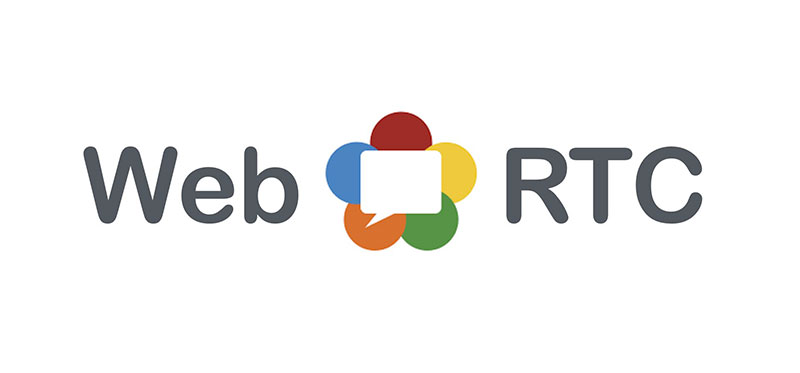Technical SEO in Web Development: Know What Developers Should Do?

Are you a web developer juggling a load of Jira tickets daily? Lately, you may have noticed SEO and marketing folks nudging you to speed up specific SEO tasks without giving you the lowdown on why it’s urgent.
The truth is that you can’t ignore the fact that SEO and web development go hand in hand in today’s digital realm. And when it’s about web developers, they’re primarily interested in technical SEO.
What Is Technical SEO for Web Developers?
Technical SEO involves improving your site’s search engine rankings by making it friendlier for search engines to crawl. Some metrics include site load times, robot.txt files, and redirects. Basically, it’s about making sure your website is visible, crawlable, and rankable by search engines.
For better SEO in web development, you can always take advantage of tools like Google Search Console, Lighthouse, Data Studio, Google Analytics, and PageSpeed Insights. These free tools work great, but to make a site perform at its very best, web developers need to put their money on well-rounded SEO tools and software solutions.
Working with an SEO reseller can also be beneficial, as they can provide specialized services and expertise that complement your development efforts.
For that reason, you can explore the list of Top10seosoftware.com, compare your needs, and pick a tool to get going. Look for a platform that is a real-time-saver but still gives you a comprehensive lowdown on your site’s on-page, off-page, and technical SEO status—all in one dashboard.
Even when you have the right tools and are aware of SEO basics, how should you use those tools to improve the performance of your website? Here’s what to consider.
Technical SEO Audits
Search engines, like Google, reward websites that play by their rules. These rules are simple: your website content should be spot-on, easy to get to, and user-friendly.
Now, imagine an SEO audit as a checkup for your website’s health in the digital world. It helps uncover technical hiccups that might be holding your site from hitting the top ranks in SERPs.
SEO tools can make it easy to run these audits, which in turn help you craft solid plans to beat the competition, spot hidden opportunities within your site, plug up those exit points, and create a stellar user experience for your visitors.
Now, what’s under the hood of a technical SEO audit? Well, you have to consider:
- Back-end factors (think hosting and indexing)
- Front-end factors (like content, keywords, and metadata)
- Link quality
Paying attention to these factors will help uncover common technical SEO issues, such as:
- Duplicate content
- Redirects
- Slow page speed
- Crawl errors
- Invalid structured data
- Indexation problems
- Security issues
It’s worth mentioning that you’re less likely to have time to fix all those issues in one go. So, go slow and focus on critical problems first. For instance, begin by fixing issues like page speed and crawl errors.
It would help if you also created a timeline to work on other concerns and leverage tools like Google Search Console, etc. Also, remember that setting up alerts for crawl errors and drops in traffic can help tackle problems before they get more complicated.
Crawling and Indexing Overview
SEO in web development is essential, mainly because of its impact on indexing. Crawling, rendering, and indexing work together to give your website street cred with both Google bots and users. To improve, you must consider your site structure and eliminate duplicate content. Why? Keep that crawl budget in check and ensure that search engine bots can only find the valuable stuff on your website.
You may have to build some external and internal links, but don’t forget the VIPs, HTML, and XML sitemaps. These are your GPS for search engines and go a long way in guiding them through your website smoothly.
Remember that XML sitemaps are crucial because they ensure search engines can find and scan your website. So make sure every page in your XML sitemaps is on point with a solid “200 server code.”
Mobile Friendliness
Today, more than half of all searches happen on mobiles. If your site isn’t mobile-friendly, you’re missing out. And that’s why mobile SEO for developers is more important than ever.
Here’s why mobile-friendly sites are important:
- Happy Mobile Users: A mobile-friendly design keeps more than half your audience satisfied. That means they stick around longer, and Google loves that, giving you better rankings.
- Crawler-Friendly: Crawlers help with indexing, and they find responsive sites a breeze to explore. No juggling between separate mobile and desktop sites—it’s a straightforward process.
- Structured Data Made Easy: Adding structured data, a fancy term for organized information, is much easier on responsive sites. Do it once, and it works smoothly across all devices—no need to repeat the same thing on different mobile pages.
Page Speed and Website’s Performance
Maintaining better page speed is one of many SEO basics. Indeed, page loads aren’t just annoying; they’re UX killers. They drive up bounce rates and dent conversion rates. And guess what? SEO performance takes a hit, too.
If a page takes two seconds to load, the bounce rate is a mere six percent. Double that time to four seconds, and the rate skyrockets to 24 percent. Blink, and six seconds later, almost half of your visitors are out the door.
Optimizing site speed isn’t a one-size-fits-all deal. It boils down to some smart moves. For instance:
- Lighter Code: Keep your code light to avoid slowing things down.
- Smart Plugin Use: Choose plugins wisely, as too many can clog up your site.
- Optimized Hosting: A snappy hosting environment does wonders for speed.
- Compression Magic: Shrink JS and CSS files down for faster loads.
- Image Control: Optimize images to boost load speed.
Website Accessibility
When you run an SEO audit as a web developer, you need to pay attention to HTTP Status Codes. Understanding these codes makes it easier to monitor your site’s health, troubleshoot issues, and make technical changes to boost user experience.
However, those codes can sometimes become rather complicated to handle, especially when you see a 404 not found status code. It requires you to check server logs and identify what went wrong, which could be tricky. Sometimes, it’s essential to redirect 404 URLs to other relevant existing pages using 301 redirects, which can be time-consuming.
Here’s a bit about some critical HTTP status codes related to website accessibility:
| Status Code | Definition |
| 200 | Signifies a successful request, generally not visible to visitors. |
| 301 | Indicates a permanent redirect, commonly used in site migrations. |
| 302 | A temporary redirect, unlike the permanent 301 redirect. |
| 307 | Temporary redirection, informing that the targeted page temporarily resides on a different URL. |
| 308 | Similar to 301 permanent redirect. |
| 400 | Standard client error indicating a bad request. |
| 403 | The client is unauthorized to access the requested resource. |
| 404 | The requested resource is not found on the server. |
| 410 | Indicates the requested resource is gone and will not be available again. |
| 421 | Indicates a misdirected request; requires fixing. |
| 422 | Indicates unprocessable entity; requires fixing. |
| 429 | Too Many Requests. |
| 500 | Internal Server Error. |
| 501 | Not Implemented. |
Security and HTTPS
When considering SEO for developers, it’s important to pay attention to cyber security to secure website data, maintain its uptime, and make sure it avoids blacklisting. Moreover, it helps sites:
- Avoid negative SEO impact
- Optimize page load speed
- Build user trust
And the first step towards ensuring better security is to get an SSL certificate. This digital document helps verify your identity and ensure HTTPS encryption. Here is how you should go about migrating from HTTP to HTTPS:
| Checklist | Description |
| Prepare | · Get an SSL certificate · Crawl your site for URLs |
| Site Access | · Try Google Analytics · Update 301 Redirects |
| Launch | · Install the certificate · Update .htaccess · Replace links in images, pages, CDNs, etc. |
| Post-Launch | · Import your new 301 redirects · Use Search Console to verify HTTPS · Submit new sitemap |
Rel Attributes
In the intricate world of web development, the “rel” attribute in HTML links serves as the navigator, defining the relationship between the source page and its linked destination. This attribute holds particular weight in SEO, aiding search engines in gauging the value of the linked content. Whether you’re weaving links within your website or connecting to external sites, understanding these “rel” attributes is paramount.
| Attribute | Description |
| Canonical Tag | The “canonical” tag in the <head> section designates the default URL, averting indexing confusion and enhancing search results. |
| Nofollow Value | A powerful SEO tool, “nofollow” signals to search engines that a link isn’t an endorsement, influencing the flow of authority. |
| Alternate Tag | Stepping in for multiple-page versions, “alternate” signals search engines about variations and promotes harmony in coexistence. |
| Noreferrer Tag | While not directly impacting SEO, “noreferrer” shields analytics by concealing referrer headers and logging clicks as direct visits. |
| Pagination Tags | “Next” and “prev” pagination tags guide search engines in organizing page sequences preventing duplicate content issues. |
Several other “rel” attribute values, like “author,” “bookmark,” “external,” “help,” “license,” “search,” and “tag,” cater to diverse web development needs. While some are handy for SEO, exercise caution—excessive use may invite search engine grumpiness.
Conclusion
Web developers need to understand the importance of checking different technical SEO metrics to ensure their sites perform well in search engines. Hailing your skills and having the right SEO tools to adapt and build effective sites is essential. Ultimately, you need to ensure your website attracts both crawlers and humans. Remember, the smoother the navigation for users and crawlers, the more likely your pages will shine in search results.
- The Benefits of Integrating Geofencing with CRM Systems - May 8, 2024
- Create Your Game: The Best JavaScript Game Engines - May 8, 2024
- Dart in Development: What is Dart Used For? - May 8, 2024








